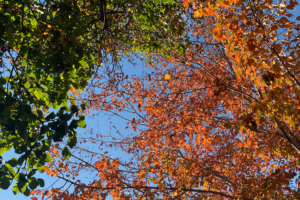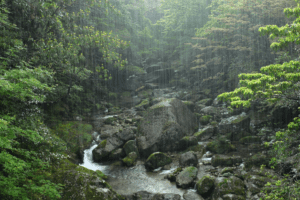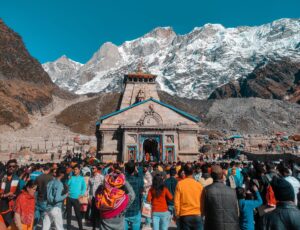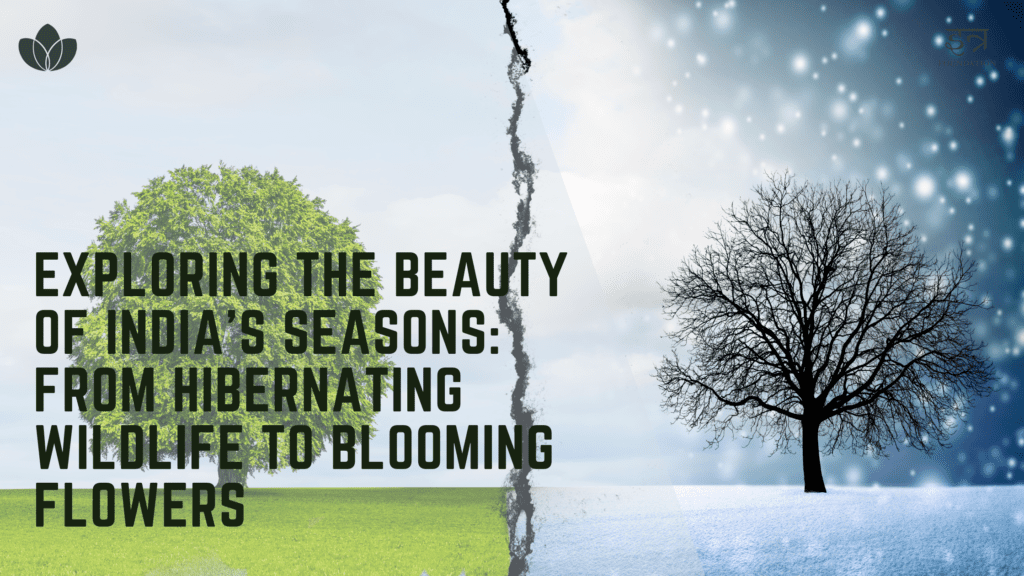The changing of seasons is more than just a passing of time, it’s a vital cycle that shapes the very fabric of our world. As the seasons change, so too does the natural world around us. In India, the transition from winter to summer is a particularly striking event. It’s a time of renewal, a time of growth, and a time of change.
But this transition is more than just a visual spectacle, it has a profound impact on the environment and human life. It affects everything from the food we eat to the air we breathe. It shapes the economy, it shapes our communities and it shapes our traditions. It is not just a passive observer in our lives, it is an active participant that shapes our very existence.
That’s why it’s important to understand and appreciate these natural cycles. By understanding how the transition from winter to summer in India impacts our lives, we can make conscious choices that support sustainable living. We can ensure that the planet we call home is preserved for future generations to enjoy. It’s time we recognize the true power and importance of the natural cycles and the impact they have on our lives.
Winter Season in India


Winter in India is characterized by cool temperatures and low precipitation levels. The average temperature during winter ranges between 10-20 degree celsius, with some regions experiencing temperatures as low as 0 degrees Celsius. The northern and western regions of India receive the least amount of precipitation during the winter months, while the eastern and southern regions receive slightly more.
The winter season in India brings about a dormant state in plants, as many species lose their leaves and enter a period of rest. This is also the time when many migratory birds, such as the Amur Falcon, arrive in India and can be seen in large numbers in certain regions. Additionally, many animals such as the Blackbuck and the Indian Muntjac, enter a state of hibernation during the winter months to conserve energy and protect themselves from the cold.
One of the most notable winter phenomena in India is the heavy winter fog that occurs in the northern regions. This can cause disruptions in transportation and daily life, as visibility is greatly reduced. The heavy fog is caused by the combination of low temperatures and high humidity and can last for several days at a time.
In some regions, seasonal lakes also form during the winter months due to the heavy precipitation and snow melt in the higher altitude regions. These lakes offer a unique habitat to the local wildlife and also provide water resources for the nearby communities.
Overall, the winter season in India brings about a unique set of changes in the natural world, from the migratory patterns of birds to the dormant state of plants and the formation of seasonal lakes. These changes have a significant impact on the environment and the local wildlife, making it an important season to observe and appreciate.
The transition to Summer


The transition to summer in India is a time of rejuvenation and renewal for the natural world. As the temperatures rise and the monsoon season begins, the earth comes alive with new growth and vitality. The dormant plant life from winter starts to come back to life and the forests and grasslands become lush and green. The buzzing of insects and chirping of birds fill the air, signaling the return of wildlife.
The transition from winter to summer in India is a time of change and adaptation for the people of India. As the seasons shift, so do how we live and work. Agriculture, tourism, and local traditions are all deeply affected by the changing seasons in India.
Summer Season in India


Summer in India is characterized by high temperatures and increased precipitation, with temperatures ranging between 30-45 degree Celsius. The monsoon season, which typically runs from June to September, brings heavy rainfall to many regions of India, replenishing water resources and supporting the growth of crops and vegetation.
The melting of seasonal ice in the higher altitude regions also occurs during the summer, which leads to the formation of rivers and streams. This melting water also supports the growth of new vegetation, creating a unique and diverse ecosystem.
One of the most notable summer phenomena in India is the monsoon season. The monsoons bring heavy rainfall and strong winds, which can cause flooding and landslides in certain regions. But it also creates some of the most beautiful landscapes, like the blooming of the Neelakurinji flower in the Western Ghats, which blooms once in 12 years, and the Lotus flowers in various regions across India, adding a beautiful and colorful display to the natural landscape.
Monsoon in India


The monsoons, which usually arrive in the summer, bring much-needed rainfall for crops such as rice, sugarcane, and cotton, which staple crops of Indian agriculture. This rainfall is essential for the growth and survival of these crops, and the success of the monsoon season can greatly impact the agricultural economy of India. On the other hand, heavy rains and flooding can also cause damage to crops and infrastructure, leading to economic losses. The warmer weather and monsoon season make for ideal vacation conditions. This increase in tourism can bring economic benefits to the local communities, but it can also lead to overcrowding and strain on resources.
Many traditional and indigenous practices have been developed in India to adapt to seasonal changes. For example, in the agricultural sector- farmers have developed different crop rotation and irrigation techniques to make the most of the monsoon season. In the tourism sector, many local communities have created sustainable tourism programs to minimize the negative impact of tourism on their resources.


In addition, many local traditions and festivals are also tied to the changing seasons in India. For example, in some regions of India, the arrival of the monsoons is celebrated with traditional dances and festivals. Similarly, the harvesting of crops during the summer is celebrated with traditional rituals and ceremonies. Overall, the transition from winter to summer in India affects human life in various ways, both positively and negatively, and it is important to understand and appreciate the impact of these changes and the traditional and indigenous practices that have been developed to adapt to them in the Indian context.
In summary, as we researched and wrote this post, We learned about the significant changes that happen in nature during the transition from winter to summer in India. From the resurgence of plant life to the influx of tourists, these changes have had a significant impact on human life, including agriculture, tourism, and local traditions. We need to understand and appreciate the impact of these changes, as well as the traditional and indigenous practices that have been developed to adapt to them in the Indian context.
As we wrote this post, We realized the importance of taking the time to appreciate and respect the natural cycles and making conscious choices that support sustainable living. Simple steps such as reducing meat consumption, choosing organic and locally-sourced produce, and participating in sustainable tourism practices can make a big difference in preserving the natural beauty of India. We also found many resources available for those who want to learn more about seasonal changes in India. One can explore the work of organizations that focus on conservation and sustainable living, or research traditional and indigenous practices that have been developed to adapt to the changing seasons in India. Additionally, One can also explore the Indian government’s policies and initiatives related to sustainable living.



